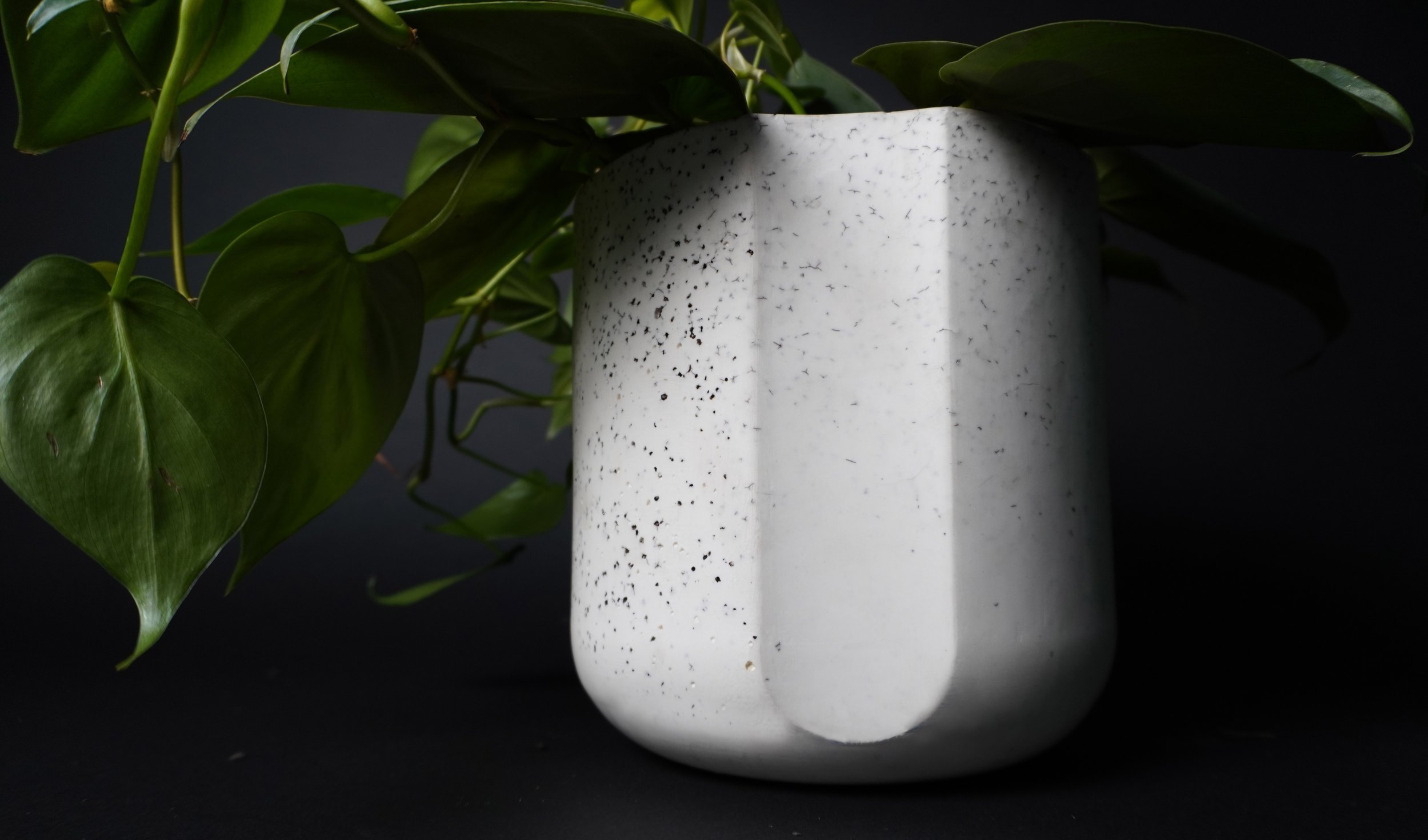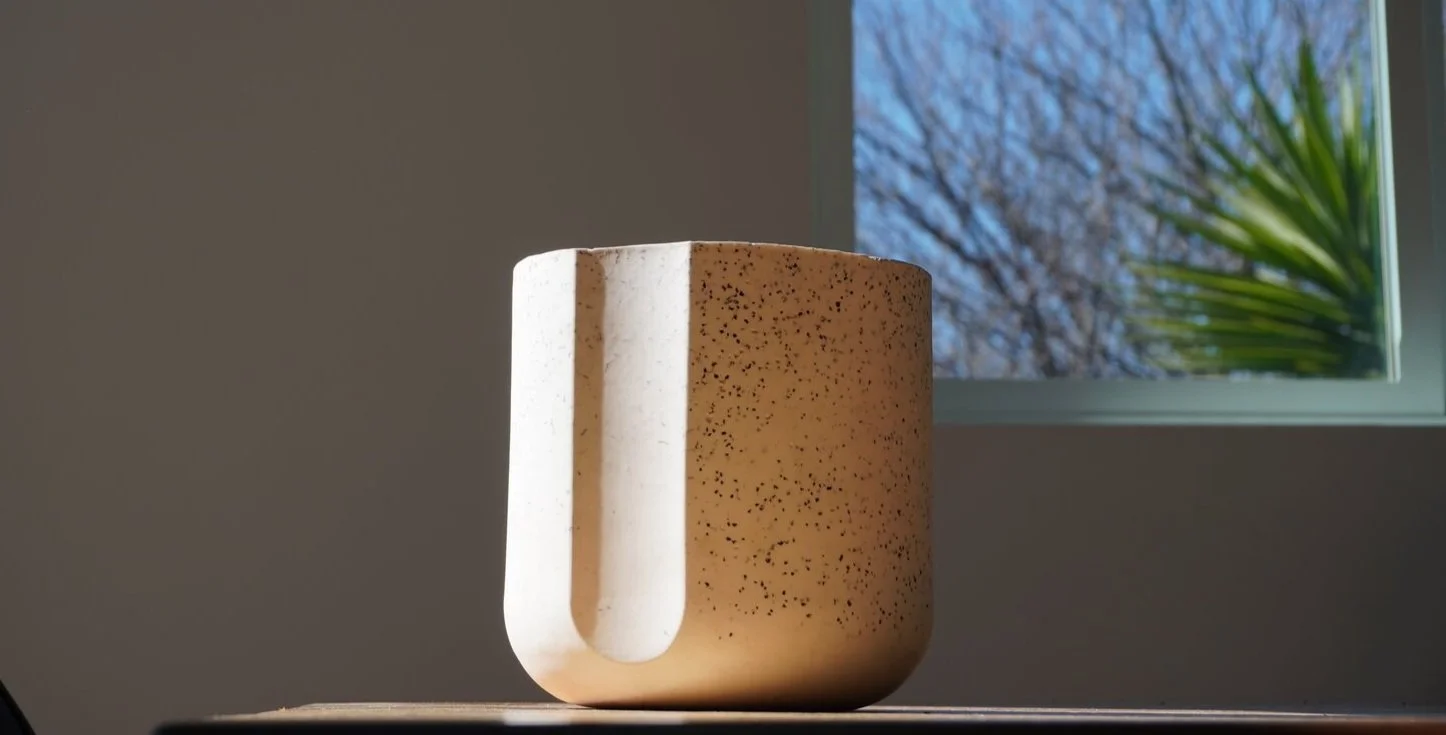potted carbon
An heirloom porcelain pot handcrafted with sequestered carbon.
One of the biggest tasks ahead of us in the effort to mitigate climate change is reengineering what we do with our ‘disposable’ materials. The ‘Blue Marble’ photo of 1972 showed a generation that there is no ‘away.’ Now, our generation must create systems where nothing can be called ‘waste.’
about
Every day truckloads of organic waste are transported long distances to landfills where they are piled together for the indefinite future. Home and restaurant food waste, green waste from park maintenance and yard trimmings, agricultural byproducts and municipal residuals like biosolids add up to millions of tons of organic materials that end up in landfill every year.
These organics layer up under non organic materials like plastics that cut off their access to oxygen, causing them to decompose anaerobically and release methane. Methane is over 20 times as powerful as CO2 in its ability to warm the planet, making these landfill emissions from organics amount to over 20 million cars added to our roads every year. 15% of all US methane emissions came from landfill in 2018.
PROJECT ROLEs
-
Potted Carbon was the result of a collaboration between myself and Garrett Benisch through our studio, Sum, while developing OurCarbon. Each pot was thoughtfully made by hand by BREAK Studio in Oakland, California. All filming, photography and editing was done by Garrett and yours truly.
-
We arrived at this design after reflecting on the fact that future archeological digs from our era will result in layers of plastic bottles, bags, and other fossil derived ‘trash.’ We don’t want to to be remembered that way.
Playing off of the common artifacts discovered throughout human history by archeologists, we designed an object that calls to the handmade ancient vases populating our museums. The black flecks suspended in the porcelain are actually sequestered carbon from our society’s municipal organic waste, biosolids. We leave this artifact to be discovered by a future society who might see that there was a seed of change even now.
-
All video, images and graphics were thoughtfully developed to reinforce the product design direction.
industrial design
The design of the planter is simple and modern, showing a flat vertical face to frame its carbon locked material. Two indentations on opposing sides of the planter pay homage to handles on ancient vessels and invite you to lift the planter up in both of your hands, to give it your full attention.
The indents also give flexibility to the diameter of the planter’s edge so that varying nursery pots can be set on the rim to display a plant without fully potting it. Suspending a nursery pot leaves room under it for drainage to reduce risk of overwatering and eliminate the opportunity for water to escape the bottom.




